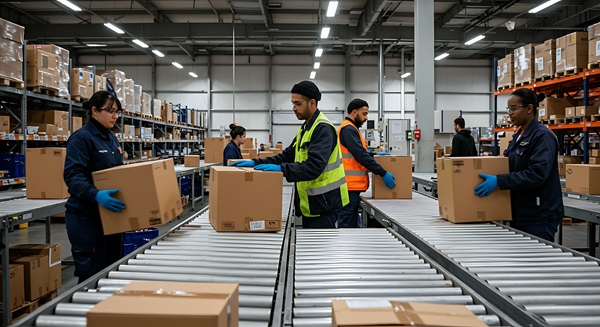
The 2025 Injury Impact Report analyzed over 2.6 million workers’ compensation claims
At first glance, it sounds like good news: workplace injuries are happening less often. But dig a little deeper, and the story becomes more nuanced. A new report from The Travelers Cos. reveals that while the frequency of injuries is down, the time it takes for workers to recover and return to their jobs is going up.
The 2025 Injury Impact Report draws on more than 2.6 million workers’ compensation claims filed over the past decade, covering a wide range of industries. Over just the past five years, businesses filed 1.2 million claims. That’s roughly 200,000 fewer than the five years before. But during that same period, injured employees missed an average of 80 workdays, up from 75 days between 2015 and 2019.
The numbers tell a story of a workforce that’s getting hurt less often, but when it does, recovery is slower. That raises questions about what’s behind the shift and what employers can do to address it.
What risk do first-year employees face?
Travelers’ data points to a persistent issue with inexperience. Employees in their first year of employment accounted for 36% of workplace injuries over the past five years. Those cases also accounted for 34% of the overall claim costs.
New hires often step into unfamiliar environments. They may not know the safest way to handle equipment or recognize workplace hazards. Even with training, adjusting to the demands of a new role takes time.
Without close supervision and reinforcement of safe practices, the chances of injury rise sharply. For businesses, that means onboarding isn’t just about filling out paperwork. It’s the first, and perhaps most important, line of defense against accidents.
How do longer recoveries affect the aging workforce?
According to the report, older workers are a growing share of the injured population. In the past five years, 41% of workplace injuries involved employees aged 50 or older. For those 60 and above, the average time away from work after an injury stretched to 97 days.
It’s not surprising that recovery might take longer with age. Bodies heal more slowly, and pre-existing conditions can complicate the rehabilitation process. But the demographic shift is undeniable. Retirement ages are climbing, and many businesses rely on experienced workers to fill skill gaps. That makes injury prevention and effective return-to-work programs especially important for older employees.
Why are recovery times increasing?
Rich Ives, Travelers’ senior vice president of business insurance claims, sees a combination of forces at play: higher retirement ages, steady employee turnover, and longer recovery times. Together, these trends increase the severity and the cost of workers’ compensation claims.
“Our aim with this report is to provide employers with insights on these dynamics that are contributing to growing claim severity so they can better navigate these workforce challenges, protect their employees, and keep their businesses running,” Ives said.
Building a safer workplace
The trends in the Travelers report aren’t likely to reverse overnight. The labor force will continue to evolve, with a blend of seasoned workers staying on longer and newer employees stepping into challenging roles. That reality calls for safety programs that are both proactive and responsive, meeting the needs of workers at every stage of their careers.
The Travelers’ report doesn’t just deliver statistics. It provides practical steps for employers to enhance safety and maintain business operations, such as:
- Onboarding and training: This means more than a quick safety video on day one. It’s about consistent, hands-on guidance. New hires need clear expectations, regular check-ins, and ongoing reinforcement of safe work habits.
- Safety culture: A workplace where safety is discussed openly, recognized, and rewarded is one where employees are more likely to speak up about hazards and follow safe practices. This kind of culture is built over time, from the top down, with visible leadership commitment.
- Hiring practices: Attracting and retaining qualified candidates can make a measurable difference in safety outcomes. People with the right skills and mindset are better equipped to avoid risky situations and respond appropriately when problems arise.
Hurt on the job in New York? Our workers’ comp lawyers can help you get the benefits you deserve.
If you were injured at work, New York law allows you to receive workers’ compensation benefits while you recover. However, the process isn’t always easy, and any error can lead to delays or denial. For over 90 years, the New York workers’ compensation lawyers at Pasternack Tilker Ziegler Walsh Stanton & Romano LLP have fought for workers who have been injured on the job. We understand the claims process and know how to achieve the best possible outcome for your case.
We offer free consultations and work on a contingency fee basis, meaning you pay nothing unless we win your case. With more than 30 highly skilled attorneys, our firm has the resources and experience to take on insurance companies that try to delay, reduce, or deny your benefits. We prepare every case for trial, which often results in better settlements without the need to step into a courtroom.
From New York City, Long Island, and Westchester to Rockland County, Albany, Buffalo, Rochester, and Syracuse, our lawyers serve injured workers across New York. If you’ve been hurt at work, contact us today to schedule your free, confidential case evaluation.
“Great legal team. Clients are kept informed of every step. Sherly Romero at the firm is super professional and always available to address any concerns. Highly recommend.” – P.C., ⭐⭐⭐⭐⭐
Prior results do not guarantee outcomes.
Attorney Advertising.




